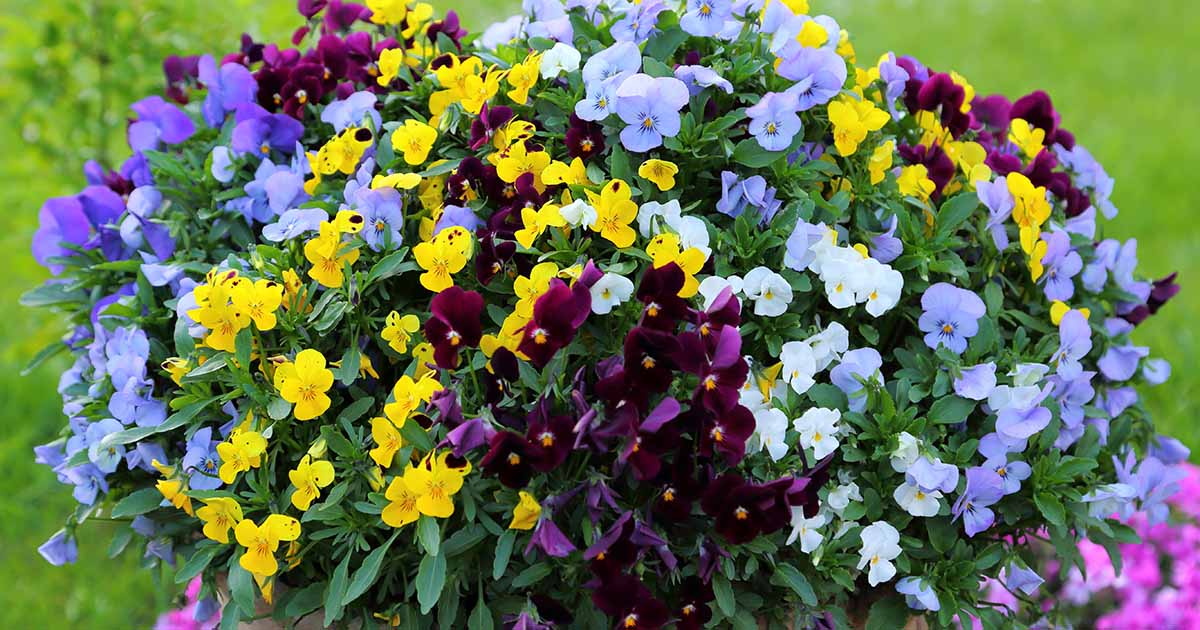Table of Contents
Pansy, also known as voila, is the native species of England. It is grown mostly in Europe and Asia. It is famous for its vibrant and colourful flowers that make the garden lively and bright. Pansy is believed to be the flower of love, and each colour of pansy conveys a different meaning. While the orange pansy symbolizes hope, the purple pansy is a symbol of nobility and royalty, and the white symbolizes innocence and purity.
It can be easily propagated through three simple methods with the least effort. The methods used for the propagation include growing pansies from seeds, root propagation, or dividing the existing plants. All of them have their perks, but the one which is easiest of all is propagation through seeds.
How to Grow Pansies from Seeds
Pansies seeds can be sowed depending on the time you want your plant to bloom. To observe the winter, blooming seeds should be sown in the late summer, while for early spring or summer, blooming pansy seeds should be sown in late winter. People living in areas of mild climatic conditions can opt for the months of July to August to sow the seeds. On the other hand, people living in cooler climatic conditions have options for growing the pansies in both late summer and early spring.
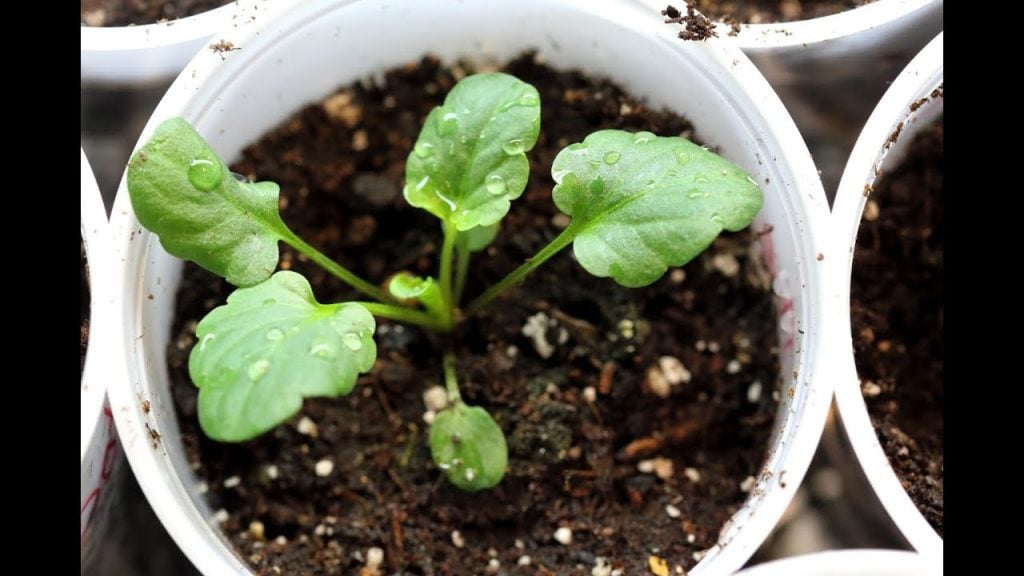
The research carried out by the University of Minnesota states that the seeds which germinate in summer are healthier and bear more flowers in comparison to the seeds which germinate in the late winter. The seeds can be either purchased from any shop, or you can take seeds from the existing pansy plants in your garden. The seeds purchased from the market produce more flowers than the seeds taken from the garden.
You can soak the seeds 24 hrs before sowing them into the soil. If the seeds float in the water, then remove them as they won’t germinate.
Advantages of Growing Pansies from Seeds
Growing pansies from seeds have advantages as it allows a person to choose from a wide variety of pansies. They also have a high germination rate. In addition to this, this process is not complicated, and the seeds germinate within 10 to 21 days after they are sowed. Growing pansies from seeds are also economical.
Outdoor Propagation
The following steps should be followed very carefully and with utmost sincerity while growing pansies from the seeds outdoors.
1. First of all, take a container with drainage holes and fill it with humus-rich soil or potting mix. Before you sow the seed into the soil, make sure you have watered the soil well.
2. Now, take high-quality seeds and sow seeds in such a way that they do not overlap. There should be at least a distance of 3 inches between the two seeds.
3. The seeds should not be directly exposed to the atmosphere, so cover them with a layer of the same soil in which the seeds are planted
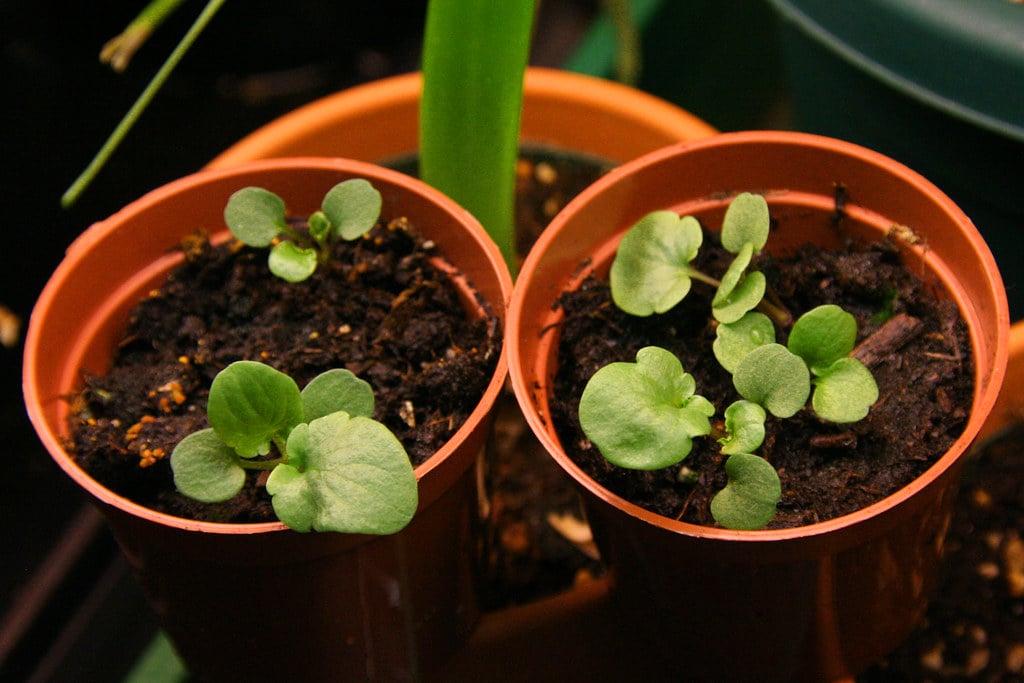
4. Again, water the container. After that, take care of the seeds until they germinate. Now after 10 to 25 days, these seedlings will sprout.
5. Once the seedlings have sprouted, you can plant the seedlings into the ground or in the pots as per your wish.
6. When you plant these seedlings into the new area, make sure that you dig at least 6 inches deep and then place the seedling.
7. While planting the seeds, they should be placed at a certain minimum distance from each other so that they do not overlap and inhibit the growth of each other. When planted in the ground, they should be placed at least 1.5 feet apart from each other. This is important as these plants acquire a lot of space when they grow.
8. Once you have transplanted the seedlings from the pot to the soil, water the seedlings immediately to prevent any damage to the seedling. Continue to water the plant regularly.
9. For the plant to bloom, avoid direct exposure to sunlight. Direct sunlight exposure will restrict the growth of plants.
Indoor Propagation
Pansies can be grown indoors when you want to plant them during the winter season. While growing pansies from seeds indoors, given steps should be followed for successful propagation.
1. Select the container in which you have to sow the seeds. Fill it with organic-rich soil and growing media and then sow the seeds in it. It is best to select a pot with drainage holes.
2. Now, cover the seeds with soil so that they remain in contact with the soil. The seeds should be covered with a plastic sheet to prevent any exposure to light. Keeping the pot in the dark room will also fulfill the same purpose.
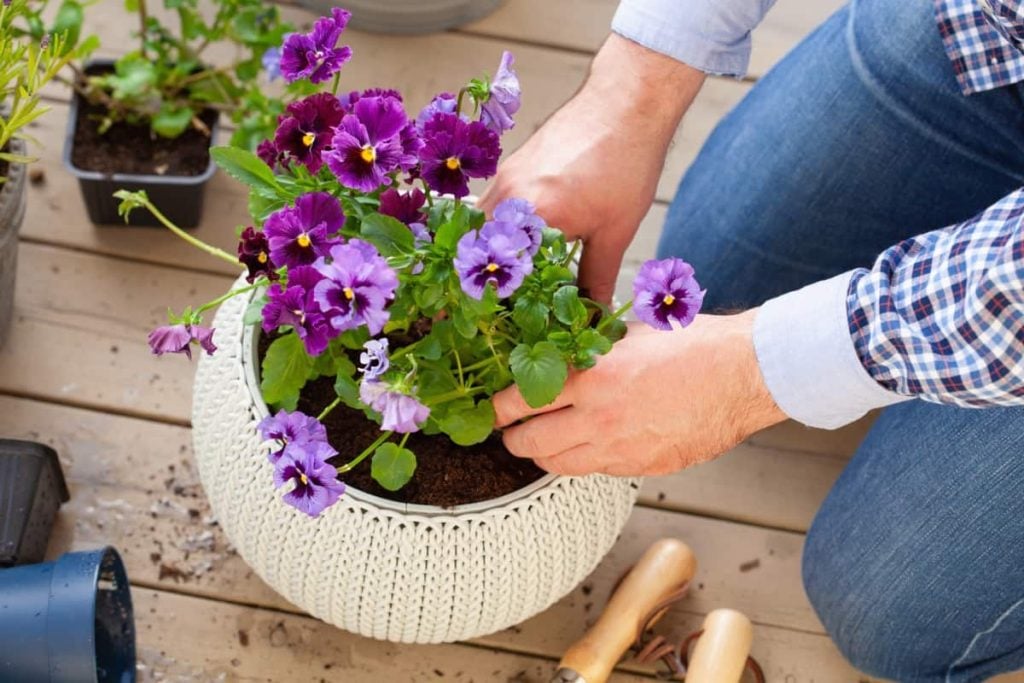
3. You should also make sure that the soil is moist enough so that the germination process can be carried out successfully.
4. After the seeds have germinated, keep them in a place where they can receive light until they are ready to be transplanted into the garden.
5. If you want to speed up the germination process, then you can keep the container in the hot room with a temperature in the range of 18C -25C.
6. For the successful growth of pansies from seeds, it is advised to transplant the indoor germinated seeds into the garden during the spring season.
7. In the case of indoor propagation, before you transplant the seedlings to the ground, first harden the soil. This involves keeping the seedlings in sunlight for a few days until they can be transplanted.
Requirements for the Successful Propagation
There are certain requirements that should be met while growing pansies from seeds. If we ensure that all of these are met, then the plant will bloom and enhance the charisma of the garden.
1. Soil
The seeds will flourish well in soil with high humus content. The soil should also be well-drained and moist. The soil should be acidic. Before seeding, ensure that the soil is rich in organic content.
2. Fertilisers
The best fertilizer for the pansies to grow successfully is an all-purpose fertilizer. Avoid using nitrogen-rich or potassium-rich fertilizers, as they will lead to more foliage growth.
3. Sunlight
These plants require approx 6 to 7 hours of sunlight daily. However, if exposed to the direct sun, they can die, so avoid direct exposure to sunlight. The young pansies need more sunlight than the mature ones.
4. Temperature
Temperature plays an important role in growing pansies from the seeds. The ideal temperature at which these plants germinate is between 7 C to 18C. If you live in colder regions, then you can consider indoor propagation of pansies.
Steps for the Healthy Growth of The Plant
Following steps can be taken to ensure a healthy and blooming plant while growing pansies from the seeds.
1. For the first few seeds, after transplanting seedlings from the container, place the pot under direct sunlight.
2. Remove the first flower buds to encourage more blooming. This might sound a little odd, but it has shown positive results.
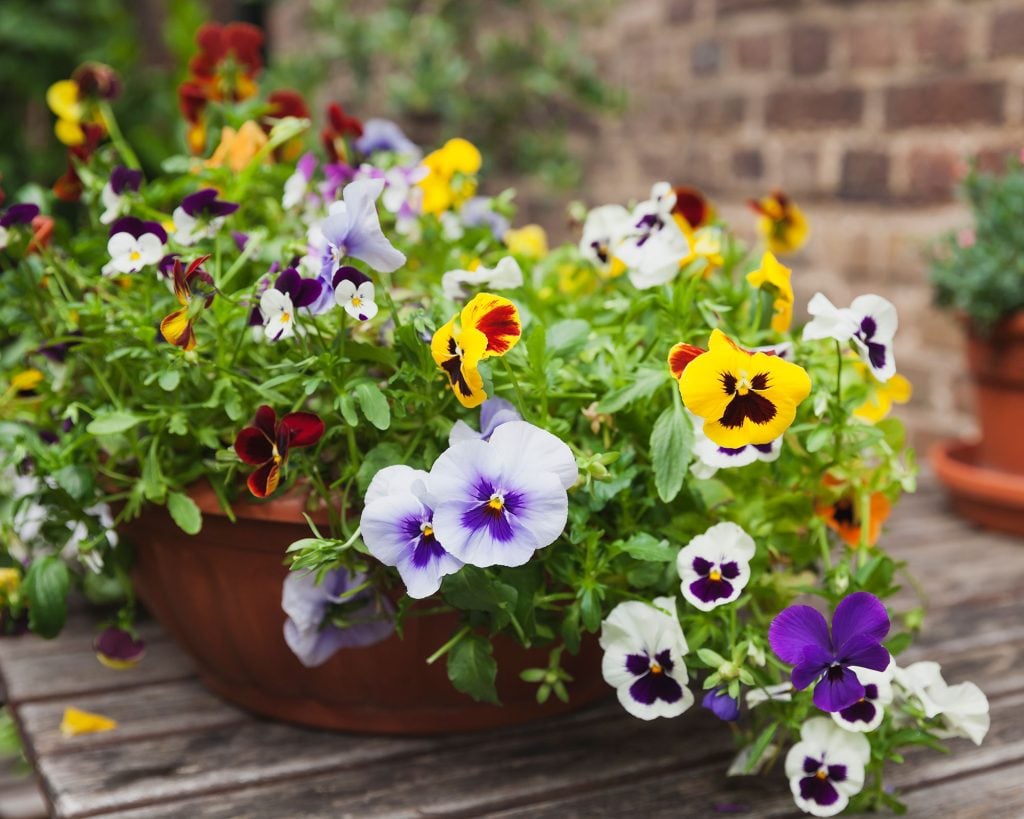
3. Feed the pansy plant with organic fertilizer periodically, mostly within one month for a few months, to aid the growth of the plant.
4. Once you have sown the seeds, water them regularly so they can successfully convert into well-blooming plant
5. Deadhead the plant regularly to remove the dead and dried flowers. Pruning using sharp scissors should also be done frequently for the removal of dead and diseased parts of the plant.
6. Mulching can be done in the winter season to prevent the escape of moisture from the roots of the pansies. Mulching is also beneficial in extremely hot conditions.
Precautions to Take While Growing Pansies
1. While growing pansies from seeds outdoors prefer a spot that isn’t directly exposed to sunlight. Direct sunlight exposure is harmful to the plants as it leads to fewer blossoms.
2. Transplanting should be done only when at least 6-7 leaves are observed on the germinated seed.
3. Avoid planting seeds that are too old. To observe the best results, using fresh seeds for propagation is advised.
4. Though the most favourable conditions for pansy plants are humid, still avoid overwatering the plant. Overwatering will kill the plant.
5. Fertilisation should be done in the winter season without failure. If the soil is not fertilized in the winter, it will become hard.
6. Insecticides should be spread regularly to protect plants from insects like slugs, spider mites, aphids, etc.
Conclusion
Pansy belongs to the family viola genus and is famous worldwide for being the “flower of seasons.” They are very delicate plants and possess a very enchanting aroma. The propagation of pansies isn’t a complicated process. One thing that should be kept in mind is that you need to be a little patient while growing pansies from seeds, as it is not a quick process.
This process takes some time, but the results are mind-blowing. By being a little careful with the soil requirements, temperature, water, and the specific nutrients required by the plant, we can successfully grow healthy and colourful pansies in our garden, and that too without any special efforts.

